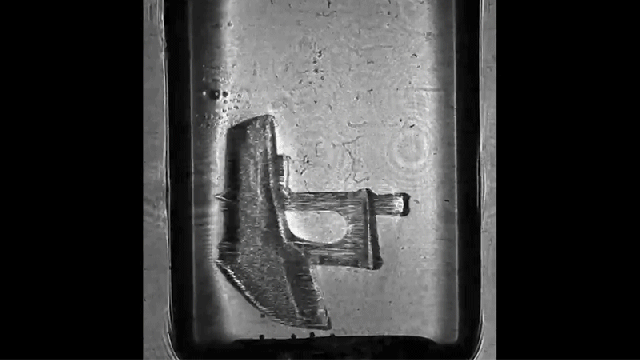Transporters? Spaceships that can travel at the speed of light? Star Trek introduced us to many fantastical technologies that have us looking forward to the 23rd century. But we might not have to wait that long for all the tech Captain Kirk had to play with, as 3D printing has taken another big step toward making replicators a reality.
Although they’re a tool that’s been in use for industrial manufacturing and prototyping for decades, it wasn’t until companies like MakerBot created 3D printers small enough, and affordable enough, for home use that people started comparing them to Star Trek’s replicators, which were devices that could instantly create items like parts and food out of thin air. But 3D printers didn’t actually work that way. For the most part, they could turn 3D models into plastic objects—and depending on the size you’d have to wait hours, sometimes days, for the printing process to finish.
To this day, 3D printers work nothing like Star Trek’s replicators. But researchers from EPFL’s Laboratory of Applied Photonics Devices have developed a new method allowing stereolithography printers to create tiny but detailed 3D objects in a manner of seconds—not hours.
[referenced url=” thumb=” title=” excerpt=”]
The 3D printers sold by companies like MakerBot extrude melted plastic from a nozzle in specific patterns, layer by layer, to slowly build up a model over time. The approach keeps the cost down, but there are sacrifices when it comes to the amount of detail that can be put into the 3D printed object. Printers that use a stereolithography process, also known as SLA, work slightly differently. Models are still built up layer by layer, but instead of extruding melted plastic, a high definition beam of light hardens a photosensitive liquid resin into thin layers. It allows for much higher detail given the precision of the beam of light, but it can still be a time-consuming process.
What the EPFL researchers are doing differently is, instead of using a single laser to build up a model layer by layer, they’re bombarding a vat of resin, or other photosensitive materials such as biological gels, with multiple lasers coming from several directions at the same time. By carefully controlling the direction of the beams and their intensity, a 3D model seemingly appears to materialise out of thin air, in a process that takes about 30 seconds.
Current layer-by-layer 3D printing techniques aren’t ideal for creating soft objects like organs or artificial tissue because they tend to just fall apart during the long printing process. But EPFL’s new approach is much better suited to the task. And because it relies primarily on light, with no physical contact, replacement organs and tissue can be printed inside sealed containers to keep out potential contaminants before they’re transplanted into a patient.
In its current state, the new 3D printing technique can only produce models about 2 centimeters in size with details as small as 80 micrometres. The researchers are confident that, as they further develop the machinery, it could create objects as large as 15 centimeters in less than a minute. It’s not quite a replicator yet—you can’t ask for a piping hot cup of Earl Grey tea—but aside from the impressive speed gains, this new approach to 3D printing will make the technology more useful for medical applications.
